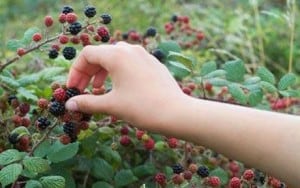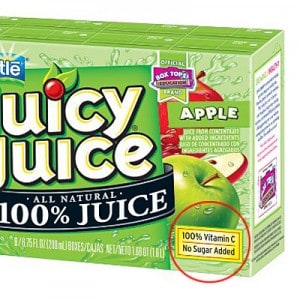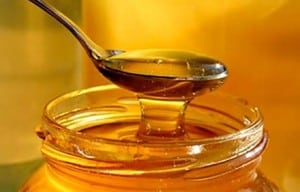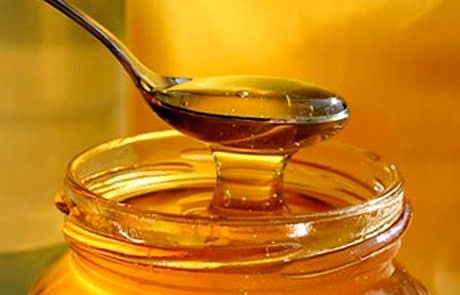Our distant evolutionary ancestors lived in a world with scant natural resources.
All that they had available to them before the harnessing of fire for cooking ware uncooked animal flesh, nuts, and seeds, with ripe fruit being a real delicacy for them.
Fruit.
Through the action of co-evolution fruit for millions of years become tasty and attractive to certain types of animals, who in turn help the fruit by dispersing its seeds. It didn’t have to be overtly nutritious, but any type of plant that was toxic certainly wasn’t naturally selected again. As primates began to expand in size and territory plants adjusted to meet our tastes and preferences. There’s no doubt that many a-plant began its life in the latrine pit of some small band of hunter gatherers.
What is it that we like about fruit?
Well, for starters, it’s one of the few abundant natural sources of sugars. Simple carbohydrates are easy for the plant to make, and easy for the animal to digest and absorb. It represented an abundant source of food energy to be given as the plant to the animal.
Modern humans can have sugar in abundance. We can pour the maple syrup from trees onto our pancakes, sweeten our coffee with the refined and crystallized juice of a woody grass, and enjoy sweet berries, bananas, or other fruit; all mixed with a yogurt sweetened from a sugary extract of corn. If our primate ancestors could see us now, they’d be seriously jealous of our diet.
But those instincts for sweetness, honed over millions of years of evolution, are a big part of the problem with modern humans.
We are still eating, as though the scarcity of winter were right around the corner, and we need to put on a layer of fat. We’ve supplanted the modest sweetness of natural fruits with concentrated and crystallized essence of right fruit. Our brains are preparing us for a shortage that will never come.

We’re urged to eat like animals that must regularly flee predators, when the real risk for us now is heart disease, or cancer.
We’re urged to eat like animals that must regularly flee predators, when the real risk for us now is heart disease, or cancer.
The sugar that we’re mostly familiar with is sucrose, or table sugar, and is usually made from sugar cane or sugar beets. It’s comprised of 50% glucose and 50% fructose joined together in a chemical bond called a glycoside linkage. The high fructose corn syrup that’s mostly used on food and drink products is called HFCS55, indicating that it’s composed of 55% fructose and 43% glucose (the remaining 2% are longer polysaccharides similar to starch, and they’re a byproduct of the manufacturing process). The only difference between the two is that the sugars are not joined in a chemical bond, they exist as monomers in solution. While your body has a hard time distinguishing between sucrose and HFCS, we shouldn’t ignore the subtly higher fructose value of HFCS.
Fructose is the sugar that’s most strongly linked to all the health problems we now associate with excess sugar consumption: heart disease, non-alcoholic fatty liver disease, lipid dysfunctions, type II diabetes, obesity, metabolic syndrome, accelerated aging, gout, memory loss, dental cavities and many more.
According to Dr Mercola:
Fructose Metabolism Basics
Without getting into the very complex biochemistry of carbohydrate metabolism, it is important to understand some differences about how your body handles glucose versus fructose. I will be publishing a major article about this in the next couple of months, which will get much more into the details. But for our purpose here, I will just summarize the main points.
Dr. Robert Lustig, Professor of Pediatrics in the Division of Endocrinology at the University of California, San Francisco, has been a pioneer in decoding sugar metabolism. His work has highlighted some major differences in how different sugars are broken down and used:
- After eating fructose, 100 percent of the metabolic burden rests on your liver. But with glucose, your liver has to break down only 20 percent.
- Every cell in your body, including your brain, utilizes glucose. Therefore, much of it is “burned up” immediately after you consume it. By contrast, fructose is turned into free fatty acids (FFAs), VLDL (the damaging form of cholesterol), and triglycerides, which get stored as fat.
- The fatty acids created during fructose metabolism accumulate as fat droplets in your liver and skeletal muscle tissues, causing insulin resistance and non-alcoholic fatty liver disease (NAFLD). Insulin resistance progresses to metabolic syndrome and type II diabetes.
- Fructose is the most lipophilic carbohydrate. In other words, fructose converts to activated glycerol (g-3-p), which is directly used to turn FFAs into triglycerides. The more g-3-p you have, the more fat you store. Glucose does not do this.
- When you eat 120 calories of glucose, less than one calorie is stored as fat. 120 calories of fructose results in 40 calories being stored as fat. Consuming fructose is essentially consuming fat!
- The metabolism of fructose by your liver creates a long list of waste products and toxins, including a large amount of uric acid, which drives up blood pressure and causes gout.
- Glucose suppresses the hunger hormone ghrelin and stimulates leptin, which suppresses your appetite. Fructose has no effect on ghrelin and interferes with your brain’s communication with leptin, resulting in overeating.
If anyone tries to tell you “sugar is sugar,” they are way behind the times. As you can see, there are major differences in how your body processes fructose and glucose.
The bottom line is: fructose leads to increased belly fat, insulin resistance, and metabolic syndrome — not to mention the long list of chronic diseases that directly result. And eating sugar may accelerate the aging process itself.
So why are we using HFCS?
It’s not an all-encompassing conspiracy. Simply, fructose is the sweetest sugar. It’s well over twice as sweet as glucose, the other monomer in sucrose. The fructose monomer alone is about 70% sweeter than sucrose. That means we should be able to use a little less of it to get the same sweetness, reducing calories and total consumption of fructose.
A recent research study suggests that this little difference of 5% more fructose and 9% less glucose, may have a larger effect on obesity and metabolic disease.
Fructose is called fructose because it’s found in a lot of fruits. Almost any fruit grown on a tree or a vine is high in free-fructose. Dried figs are especially high, apples, peaches, nectarines, pears etc.

Grapes cherries, yams, and beats are also high in fructose, so when you see that something is labeled “no sugar added” check to see that they haven’t added something like apple or grape juice instead, which can actually be higher in fructose than high fructose corn syrup.
Grapes cherries, yams, and beats are also high in fructose. When you see that something is labeled “no sugar added” check to see that they haven’t added something like apple or grape juice instead, which can actually be higher in fructose than high fructose corn syrup.
Does that mean you shouldn’t eat fruit?
No, the fiber found in most fruits slows down the absorption of sugar, causing less of a spike, but you should watch how much fruit juice and certain low fiber fruits you’re eating or serving your kids, however.
A sugary 12-oz Coke contains about 39 grams of carbohydrate, with about 20 grams of that being pure fructose. The same amount of apple juice may contain 42 grams of sugar, but may actually contain MORE than 20 grams of fructose.
Other foods that are very high in fructose are apple sauce, honey, pears, agave nectar, grape juice, pomegranate juice, dates, and watermelon. Some of these have more fructose per weight than a sugary soda.
This is the reason HFCS is so evil: it’s being overused, we’re drowning in it.
The politics of corn production in the US are complicated, it’s one of our top exports, so keeping it in excess production is politically popular. We export a lot of agricultural products, and corn is one of the most fungible of those exports. It can sit in a silo for a long time, and we’ve found a billion-and-one uses for it. From the perspective of the environment, it’s not that great of a crop, but from the perspective of yield, it is. Farmers make a lot of money from it, and politicians seem to love subsidizing corn to keep it cheap, which stimulates economic growth.
Industry loves HFCS because and stores very easily, unlike granular sugar, which is very moisture sensitive. It’s already in solution, so all you have to do is add it to the manufacturing batch, as opposed to granular sugar, which must be dissolved into a simple syrup before addition.
The reason HFCS is evil, however, is because we like it so much. Sucrose isn’t necessarily any better for you, but it’s slightly more expensive and harder to add to a liquid product, which may make a beverage company hesitate for a second before doubling the sugar content in a soda.

HFCS is a problem because kids are drinking too many sugary sodas at a young age, and so are adults.
Consumers are driven by their biology, adapted to desire the sweetness of raw fruit, loaded with fructose. Companies are driven by profit, to give customers what they’re willing to buy. The collision of these two factors is an obese, diabetic country.
HFCS is a problem because kids are drinking too many sugary sodas at a young age, and so are adults. Our fructose consumption is too high. That’s not because HFCS is that chemically different from table sugar or sucrose, it’s because manufacturers like to use a lot of it.
We could be killing ourselves just as easily with cane sugar, but it would cost us a few extra bucks a year; HFCS is just putting up handrails and lighted paths on the road to our self-destruction, we’re the ones walking along it.
So how much added sugar should we be consuming a day? The MAYO clinic and American Heart Association give the same figure: no more than 100 calories for women, and no more than 150 calories for men. One can of soda is about 100 calories of added sugar, so limit yourself to about that much per day, or less.
Try drinking water instead, add a little twist of lemon or lime with some ice. You’ll be a lot more refreshed and a lot healthier as a result.
Now watch this very important Ted Talk by a world renowned expert in metabolic disease and sugar, Dr Lustig.
Dr. Lustig assesses the health dangers of sugar and its link to Type-2 diabetes and the global obesity epidemic.
He is the author of several books and many articles on childhood obesity, including the recent “Obesity Before Birth.”





What an interesting article ! Thank you very much !
Very interesting. Thank you.